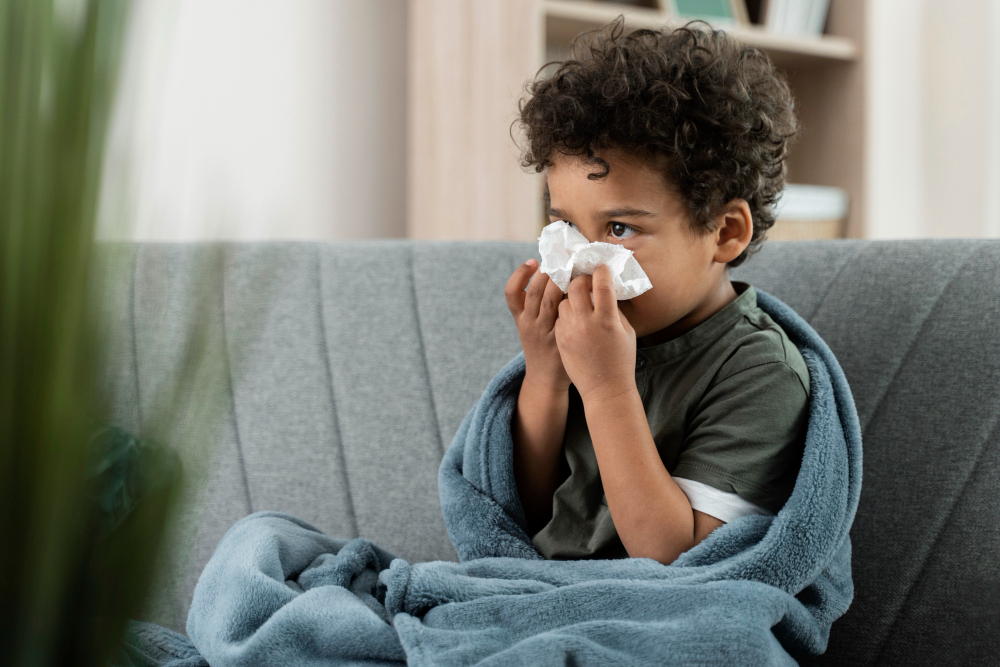What is Flu in Children?
The flu in children is a common illness caused by the influenza virus. It spreads easily, especially in schools and daycare centers. Children can get sick quickly, and sometimes, their symptoms are more severe than in adults. Because of this, parents and caregivers should know how to spot and manage the flu in kids. Early care can help prevent complications.
Common Symptoms of Flu in Children
Flu symptoms in children can appear suddenly. While some signs are like a cold, others are more intense. Knowing pediatric flu symptoms helps you act fast. Look for these signs:
However, not every child will have all these symptoms. Some may only have a few.
Causes and Risk Factors
The flu in children is caused by the influenza virus. It spreads through droplets when someone coughs, sneezes, or talks. Kids can catch the flu by touching surfaces with the virus and then touching their mouth, nose, or eyes. Because children have close contact with others, they are at higher risk.
Some children are more likely to get severe flu, including:
Additionally, crowded places like schools increase the risk of spreading the virus.
How Flu in Children is Diagnosed
Doctors often diagnose the flu in children based on symptoms and a physical exam. Sometimes, they may use a quick test called a rapid influenza diagnostic test. This test uses a swab from the nose or throat. Results are usually ready in 15-30 minutes. However, not all children need this test. If your child has severe symptoms or is at high risk, the doctor may suggest it.
Treatment Options for Pediatric Flu
Most children with the flu get better at home with rest and fluids. However, some may need medicine. Doctors may prescribe antiviral drugs if your child is at high risk or has severe symptoms. These medicines work best when started within two days of symptoms. They can help shorten the illness and prevent complications.
For most kids, treatment focuses on:
Never give aspirin to children, as it can cause serious problems.
Home Care and Lifestyle Tips
While your child recovers, home care is important. Here are some tips to help your child feel better:
Additionally, watch for signs of dehydration, such as dry mouth or less urine.
Prevention Strategies for Flu in Children
Preventing flu in children is possible with a few simple steps. The best way is to get the yearly flu vaccine. The CDC and WHO recommend the flu shot for all children over 6 months old. Besides vaccination, you can help prevent flu by:
These steps lower the risk of spreading the virus at home and school.
When to See a Doctor
Most cases of flu in children are mild. However, sometimes the illness can become serious. Call your doctor if your child:
Early medical care can help prevent serious problems.
In summary, knowing the signs, causes, and ways to treat and prevent the flu in children can keep your family healthy. If your child shows flu symptoms, consult a pediatrician at KIMS Hospital for personalized advice and care.

